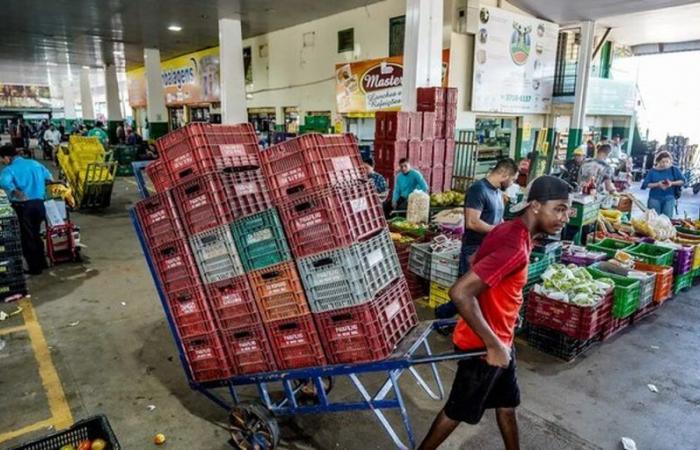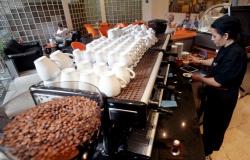The high temperatures recorded in important tomato producing regions, as well as the rains in onion planting areas, influenced the supply of products in the main wholesale markets, which led to an increase in sales prices last month. This is what the 3rd Bulletin of the Brazilian Horticultural Market Modernization Program (Prohort) shows, released this Wednesday (20) by the National Supply Company (Conab). In the case of tomatoes, the heat in January accelerated the ripening of the fruit, causing supply to increase in the first month of the year. Consequently, there was less availability of the product at the harvest point in February, indicating an exhaustion of the summer harvest, which is usually replaced by the winter harvest only in March/April. For onions, an increase in prices is expected for the period, since the market is supplied by supply in the south of the country, notably in Santa Catarina, which is complemented by imported onions, which influences the increase recorded. The survey also shows that carrots, on the other hand, registered a drop in prices. The increase in the quantity of roots offered at the Supply Centers (Ceasas) analyzed is one of the factors that explain the reduction. With the intensification of harvesting in the main producing states, it can be inferred that the movement of the product was smaller, reducing costs. In the case of potatoes, prices rose, but to a lesser extent compared to January of this year and December 2023. This slowdown in the increase is justified by the greater supply of the tuber. It is worth noting that the weather delayed the planting of the product and, as a result, the arrival of the water harvest with greater intensity tends to occur later. At the beginning of this month, prices in most of the Ceasas analyzed showed a downward trend, an indication that the water harvest has accelerated, increasing the availability of the tuber in the markets.
Fruits
For the fruits analyzed by the Company, the biggest increase was bananas, with an increase in the weighted average of 20.41%. Winds and storms that damaged banana plantations of the dwarf variety in the main producing regions, from the north of Santa Catarina to Vale do Ribeira/SP, reduced the supply of the fruit. The availability of silver is affected by the off-season in which production goes through. For the orange market, February was characterized by rising prices and fluctuations in sales, amid continued scarcity of the fruit in orchards. Even with the slowdown in industry orders, the orange harvest for wholesale and retail remained low, putting further pressure on prices – amid good demand due to the heat. A similar scenario was seen for apples, with instability in sales and high prices. The harvest of the Gala variety was intensified during the month, amid difficulties, at times, with rain in the orchard regions, which delayed activities. For the Fuji variety, harvesting should begin in the second half of March. In March and April, it is expected that the availability of already classified fruits will increase, both of the Fuji and Gala varieties, and, thus, there will be a slight drop in prices in some supply centers. On the other hand, papaya and watermelon saw a downward movement in prices. For papaya, demand was weak and supply increased significantly in the first half of February. This greater availability can be explained by the rains in the south of Bahia and north of Espírito Santo, combined with the heat in the region, which may have accelerated the ripening of the fruit. In the post-carnival period, supply gradually decreased, while demand improved slightly. Watermelon also recorded different movements over the past month. In the first part of February, the harvest was more contained in the squares of Rio Grande do Sul, as the heat caused loss of quality and burns on the skins, increasing the need for irrigation and, thus, increasing production costs. In the second part of the month, the rains returned, helping the development of the fruits and increasing supply.
Exports
In January and February 2024, 156.3 thousand tons of fruit were sent abroad, a stable volume in relation to that recorded in the first two months of 2023, and revenue was US$176.9 million, higher than 13 .7% compared to the first two months of 2023 and 20% compared to the same period in 2022.
Emphasis
In this edition, the highlight of the Bulletin brings information about the National Meeting of the Brazilian Association of Supply Centers (Abracen) and the Brazilian Confederation of Associations, Unions, Shopkeepers of Ceasa and Related (BR-Brastece), held at the beginning of March in Rio Grande do Sul. During the event, the Minister of Development and Social Assistance, Family and Fight against Hunger, Wellington Dias, and the Secretary of Supply, Cooperatives and Food Sovereignty of the MDA, Milton José Fornazieri, recognized the importance of Ceasas in the fight against hunger, being a strategic tool to concentrate supply in one place, facilitating the flow of production and consumption of food at fair prices, in addition to being an environment of access to quality food for those who are in a situation of food insecurity and nutritional. In this sense, the minister announced the availability of 4 million reais for the implementation of new food banks in Ceasas that do not have such equipment and another 4 million to equip and renew existing banks. By Conab
(Editor Sou Agro/Sou Agro)
Tags: Climatic conditions impact supply fruits vegetables influence prices
--





